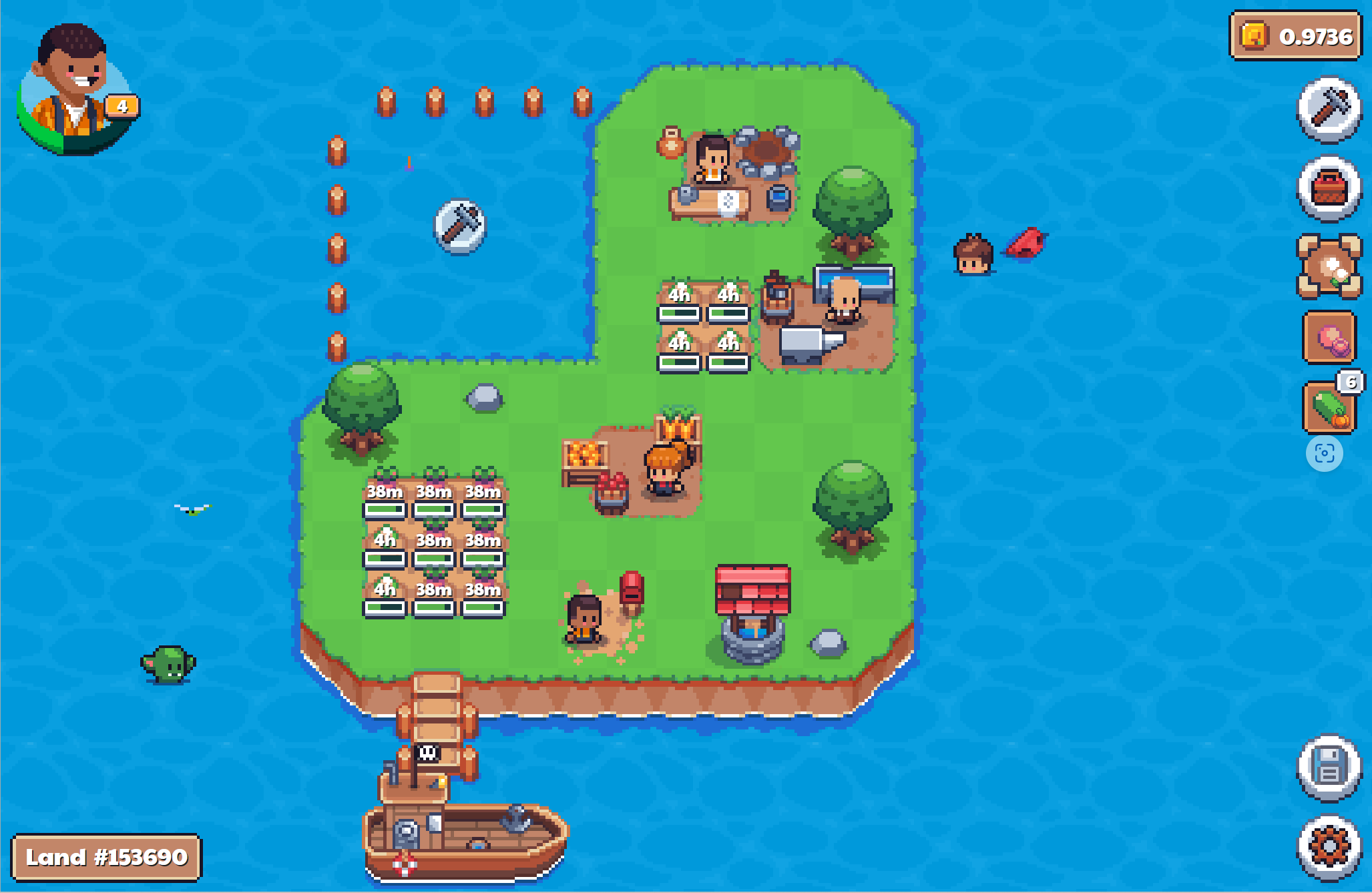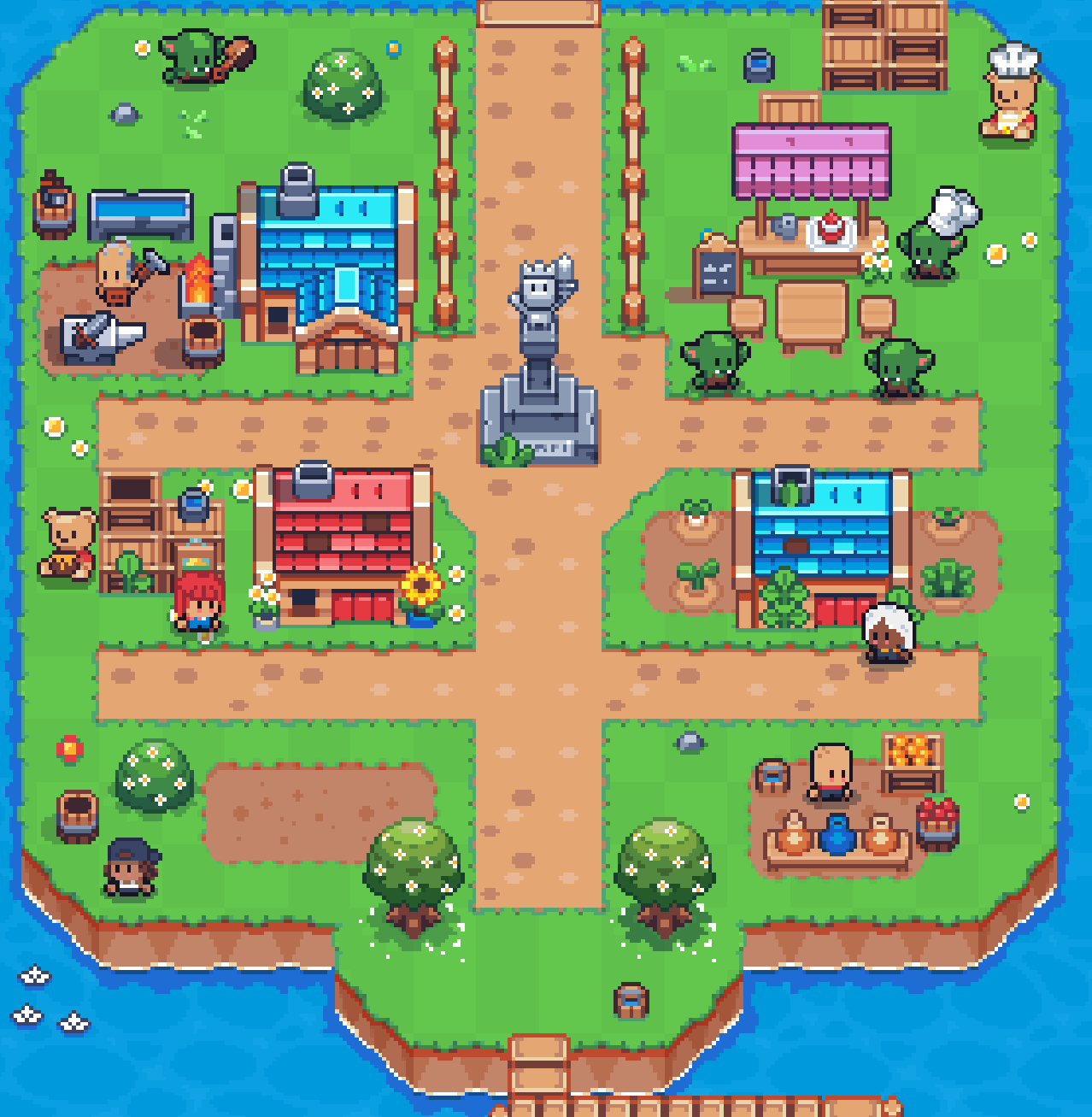The Introduction
Sunflower Land is a farm simulator utilizing Blockchain technology. The game launched its V1 earlier this year and met some setbacks. Later, it came back with a much better ecosystem and community. It is an amazing casual farm simulator where players can truly enjoy the process of growing their island.
The game of Sunflower Land works exactly like anything you would expect from a 2D pixel-style farm simulator. Players are given farmland at the beginning, and they can grow crops, reap and sell them in the store. When they accumulate enough SFL - game tokens, they can purchase tools such as axes and shovels to harvest construction materials, for example, stones and wood. The island can be further expanded and buildings can be built spending these construction materials.

Of course, players shall not be confined to one island. Upon reaching a certain level, players can use the boat on the dock to travel to other locations, including Helio and Goblin Retreat. The Helio island has stores with exclusive items. On the Goblin Retreat, players can trade their crops and craft decorations. More locations and functions will be revealed later as the game develops.

The Fun
As a farm game, the biggest joy comes from the moment when you unlock a certain crop or a certain building. Sunflower Land does well in this regard. It offers you beautiful pixels-style in-game items. Plus, the sense of achievement coming from expanding your island on the water is magnificent. One must try, then can one understand the joy of creating something out of nothing.
What Sunflower Land exceeds any other titles, is an open market that connects all players together. Crops are NFTs, decorations are NFTs. In fact, there are 217 different items on sale on Opensea. Most of the in-game items are tradable.
The free market turned Sunflower Land from a game into a trading ecosystem, and it really pulled players closer. In discord, over 222K messages are sent in December alone. Most conversations circle around prices and how people view the current “crop” market. The community vibe really brings me back to the 2010s when I was bargaining in-game props with friends. It is a great feat to have such an amazing community on this large scale.
The No-Fun
Sunflower Land has a lot of content for players to progress and explore, but the Sync feature is a huge bummer. In traditional farm games, players either have their crops dropping seeds or they can purchase seeds from the store. Sunflower Land has a store but can provide only a fixed number of seeds. When you purchase out all of them, you need to Sync the game to replenish the seed store. The Sync function records your data on-chain, and it costs ~ 0.2 Matic (0.13 as log fee and 0.07 as gas fees).
When I play a farm game or any game that involves economic calculation, I want to make sure that I am pulling the utilization at its maximum, and I want to waste nothing. However, if I want to explore more about the game fast, I need to level up quickly. In the early stage, I can only cook pumpkin soup or bumpkin soup, and the crops were soon consumed before I can reach level 5. Although 0.2 Matic is less than $0.2, syncing the game means I have to give up the rest of the seeds. The game left me with two options, I can either waste the seeds and keep level up or I need to plant all of them. Wasting is something I do not want to do, but slowing down the leveling-up process also hinders my game experience.
The To-Earn
There is only one token in the game, SFL, short for SunFlower Land. Its price has ups and downs but has been relatively stable at around $0.1. It is a remarkable feat considering the current market condition.

Sunflower Land has two ways of controlling the token supply. First, it takes a Bitcoin route where the yield will be halved after a certain amount of SFL has been produced. Second, it takes an ETH approach where the tokens are burned when players craft rare items.
To further maintain the token price, the game also implements a heavy withdrawal fee. If you are withdrawing less than 10 SFL, the fee is 30%, less than 100, 25%, less than 1000, 20%... Doing so avoids frequent cashing out, especially for those who invested little time in the game. The fees are then distributed to the wish well, the treasury, and the team to further build the game.
Trading is not feeless either. After reaching the Goblin Retreat, you will be able to sell your crops to another player on-chain. However, you cannot sell them directly through your wallet. Instead, you are given a new address that stores everything you had from your last sync, and you can trade your goods using that wallet. Listing your items also takes a certain amount of Matic (0.3 Currently). If you want to expose your NFTs to a larger audience and would like to sell them on OpenSea, there is another delivery fee (30%) required to transfer items from the wallet into your own wallet. Making a profit from trading requires some delicate calculations.
The General Impression
The community is heavily involved in the project, which is the most impressive aspect of the project. The traces of community thinking can be found everywhere, from the discord server to the whitepaper. There are great tools developed by the community as well. Also, Thought Farm Ltd, the team behind the game, is extremely transparent about incomes and the money flow. All things combined, I see this project as the paradigm of Web3 games, and I believe in its future.
The game is not really for people to make a big fortune. It has a really cheap entry level and takes some time for the players to profit from one account. For the exact same reason, it is a game that makes sense for players to have fun, either in trading or progressing. If you are one of the gamers who love simulators and believe in the power of transparency, the game is a must-try.